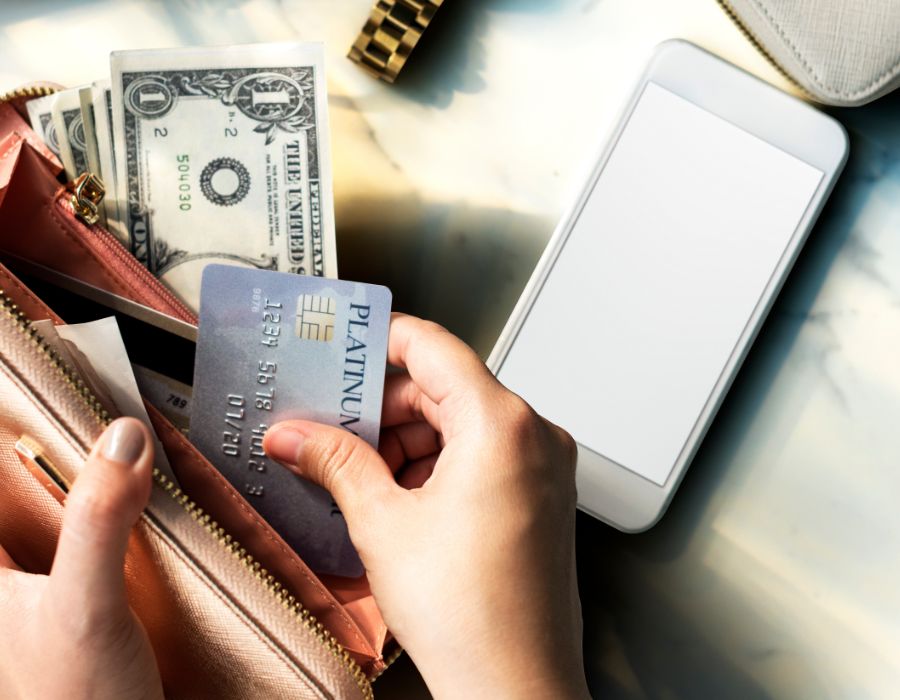Are you tired of constantly giving in to your urge to buy things on impulse? Do you find yourself regretting those impulsive purchases later?
Well, it’s time to take control of your spending habits and discover the power of mindful spending. In this article, we will explore practical strategies that will help you avoid impulse purchases and cultivate a conscious consumer mindset.
By understanding the triggers behind impulsive buying and implementing these techniques, you can experience long-term benefits for your wallet and overall financial well-being.

Understanding the Impulse Buying Mindset
Understanding the impulse buying mindset is crucial in order to avoid unnecessary purchases. When you find yourself succumbing to impulsive buying, it’s important to recognize the underlying factors that drive this behavior.
One key aspect is the emotional state you’re in at the time of purchase. You may be feeling stressed, bored, or even excited, and these emotions can cloud your judgment and lead you to make impulsive decisions.
Another factor that contributes to impulse buying is the desire for instant gratification. In today’s fast-paced society, we are constantly bombarded with messages telling us that we need things now and that our happiness depends on it. This sense of urgency can override our rational thinking and push us into making impulsive purchases without considering whether we actually need or want the item.
Moreover, retailers are experts at creating a sense of scarcity or exclusivity around certain products. Limited-time offers, flash sales, and one-time deals trigger our fear of missing out (FOMO) and compel us to buy things on the spot before they’re gone forever.
Understanding these underlying factors can help you break free from the impulse buying cycle. By becoming aware of your emotions, resisting instant gratification urges, and questioning whether a purchase is truly necessary or just driven by FOMO tactics, you can regain control over your spending habits and make more mindful choices.

Identifying Triggers and Reducing Impulse Temptations
Identifying triggers and reducing impulse temptations can be challenging, but it’s important to recognize the factors that lead to unplanned purchases. You might often find yourself succumbing to the allure of a sale or being swayed by clever advertising tactics. These triggers can vary from person to person, so it’s crucial for you to reflect on your own shopping habits and identify what specifically tempts you.
One common trigger is emotional states. When you’re feeling stressed, bored, or even happy, you may be more susceptible to making impulsive purchases as a way to cope or reward yourself. By becoming aware of these emotions and finding alternative methods of self-care or entertainment, such as taking a walk or reading a book, you can reduce the impulse temptation.
Another trigger is the physical environment. Retailers strategically design their stores to entice customers into buying more than they intended. Bright lights, attractive displays, and enticing scents are all used to manipulate your senses and encourage impulsive decisions. Being mindful of these tactics can help you stay focused on your needs rather than getting swept up in the moment.
Lastly, peer pressure and social norms can also play a role in triggering unplanned purchases. Seeing friends or colleagues with new gadgets or trendy clothes might make you feel compelled to keep up with them. However, it’s important to remember that everyone has different financial situations and priorities. Instead of giving in to peer pressure, focus on your own goals and values when making purchasing decisions.

Practical Strategies for Mindful Spending
To make more intentional choices with your money, it’s important to create a budget that aligns with your financial goals and values. But creating a budget is just the first step. Now, you need practical strategies to help you practice mindful spending and avoid impulse purchases.
One effective strategy is to give yourself a cooling-off period before making any non-essential purchases. When you see something you want, wait for at least 24 hours before buying it. This helps break the cycle of instant gratification and gives you time to evaluate whether the purchase is truly necessary or just a fleeting desire.
Another helpful strategy is to track your spending regularly. This allows you to see where your money is going and identify areas where you can cut back. Use apps or spreadsheets to keep track of every expense and categorize them accordingly. By having a clear picture of your spending habits, you are more likely to make conscious decisions about where your money should be allocated.
Lastly, consider implementing the ‘one in, one out’ rule when it comes to shopping for new items. For every new item purchased, let go of something old or unused that serves the same purpose. This not only helps declutter your space but also ensures that each purchase has value and purpose.

Cultivating a Conscious Consumer Mindset
One way to develop a conscious consumer mindset is by reflecting on the impact of our purchases. It’s important to take a moment and consider the consequences of our buying decisions. Ask yourself, ‘Do I really need this item?’ or ‘Is there a more sustainable option available?’ By consciously thinking about these questions, you can start making more informed choices.
When reflecting on the impact of your purchases, think about the environmental and social implications. Consider how the production and disposal of an item may contribute to pollution or harm communities. Look for products that are ethically sourced, eco-friendly, or locally made. This way, you can align your spending with your values.
Another aspect to reflect on is quality versus quantity. Instead of buying cheap items that won’t last long, invest in higher-quality products that will stand the test of time. Not only will this save you money in the long run, but it also reduces waste.
Additionally, reflect on whether you truly need something new or if you could find it secondhand instead. Thrift stores and online marketplaces offer plenty of pre-loved items that are still perfectly usable.

Long-Term Benefits of Avoiding Impulse Purchases
When you resist the urge to make impulsive purchases, you can experience long-term benefits such as saving money and avoiding clutter. By taking a moment to pause and evaluate your buying decisions, you can prioritize what truly matters to you and make more intentional choices.
One of the most significant advantages of avoiding impulsive purchases is saving money. When you resist the temptation to buy on impulse, you give yourself the opportunity to consider if the item is really necessary or if it aligns with your long-term financial goals. This thoughtful approach allows you to save your hard-earned money for things that truly matter, like paying off debts, building an emergency fund, or investing in your future.
Another benefit of resisting impulse purchases is avoiding clutter. Impulsive buying often leads to accumulating unnecessary items that end up taking valuable space in your home. By making mindful purchasing decisions, you can prevent unnecessary clutter from piling up and create a more organized living environment.
Furthermore, by controlling impulsive spending habits, you develop discipline and self-control over time. These qualities not only help with managing finances but also carry over into other aspects of life such as goal-setting and decision-making.
understanding your mindset and identifying triggers, you can reduce temptations and make more conscious choices
Implementing practical strategies like creating a budget and waiting before making purchases will help you avoid impulsive decisions. By cultivating a conscious consumer mindset, you will not only save money but also contribute to a more sustainable future.
Remember, the long-term benefits of avoiding impulse purchases are well worth the effort. So go ahead, take control of your spending and live a more intentional life.






